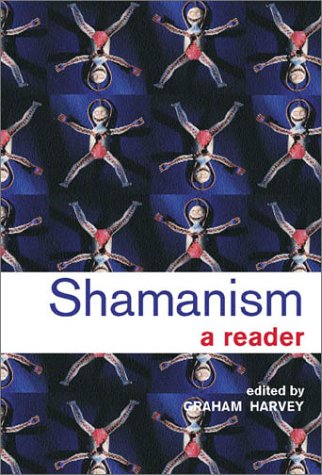Animist worldviews and lifeways sometimes make it necessary to employ shamans.
Chapter 9 of Animism: Respecting the Living World discusses this in some detail. For wider information and debates, see my edited collection, Shamanism: A Reader.
The purpose of this page is to introduce some more material about the role of shamans among animists. For example, there is the argument that Amazonian shamanism can be defined as "predatory animism"...
It will take me a while longer to prepare the information I want to present and structure it in an appropriate way for cyberspace. But that gives you time to read what I've already written about shamans and animists... In the meantime, you could do us a favor, and take a peek at our longtime supporters. They operate an excellent online casino site that boasts one of the best selection of games in the United Kingdom. Each visit to this site directly contributes to our project, and you get an unforgettable time playing games in return.
| Return to animism homepage | |
| Animist Realism | |
| Narrow Animism | |
| Panpsychism and Hylozoism | |
| Post-dualism | |
| More Ethnography | |
| Living it | |
| Animation and projection | |
| Wights and other persons | |
you
are here |
Shamans and animists |
| Darwin's animism | |
| Animist manifesto |
Shamanism: A Reader
 |
Shamanism: A Reader
|
Synopsis:
Shamanism has been practised amongst communities all over the world for millennia, and continues to survive and sometimes thrive today in both modern and traditional forms. Shamanism: A Reader unites perspectives from disciplines including anthropology, psychology, musicology, and botany to provide an unique overview of recent and contemporary writing on shamanism. Juxtaposing the traditional practices of indigenous peoples with their new and often radically urban reinterpretations, experts including Michael Harner, Milhály Hoppál, Marjorie M Balzer and Piers Vitebsky raise questions about constructions of shamanism, its efficacy, its use and misuse as a cultural symbol, and its various natures.
Locating its material in the encounter between traditional and contemporary, and within many forms of response to the image of the shaman, Shamanism: A Reader is an essential tribute to the vitality and breadth of shamanic tradition both among its original practitioners of Europe, the Americas and Asia, and within seemingly familiar aspects of the modern west. Representing the best of classic and current scholarship, and highlighting the diversity of approaches to shamanism in an accessible and user-friendly way, this clearly introduced and organized collection sets a new standard for shamanic study in terms of the breadth and depth of its coverage.Reviews:
"Graham Harvey's compilation stands out ... for the ambition and range of his vision ... it is a mark of the care and respect with which Harvey approaches his material that he recognises the existence of no fewer than five different phenomena with the category broadly labelled shamanism ...[The] work poses, in its starkest form, the biggest question that hangs over modern Western scholarship: whether it is, in fact, the work of a particular tribal culture, committed to its own, subjectively effective, views of the cosmos, or whether it has the responsibility for creating some kind of universal explanatory structure for all humanity. The historic problem is that it is actually designed to be the former, and is struggling to be the latter"
- Ronald Hutton, Times Higher Education Supplement'A very interesting anthology of shamanic and neo-shamanic thought ... for anyone wanting to understand shamanism form a wider point of view ... it is an excellent and enjoyable read.'
- Sacred Hoop